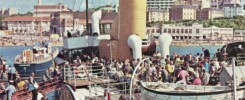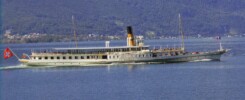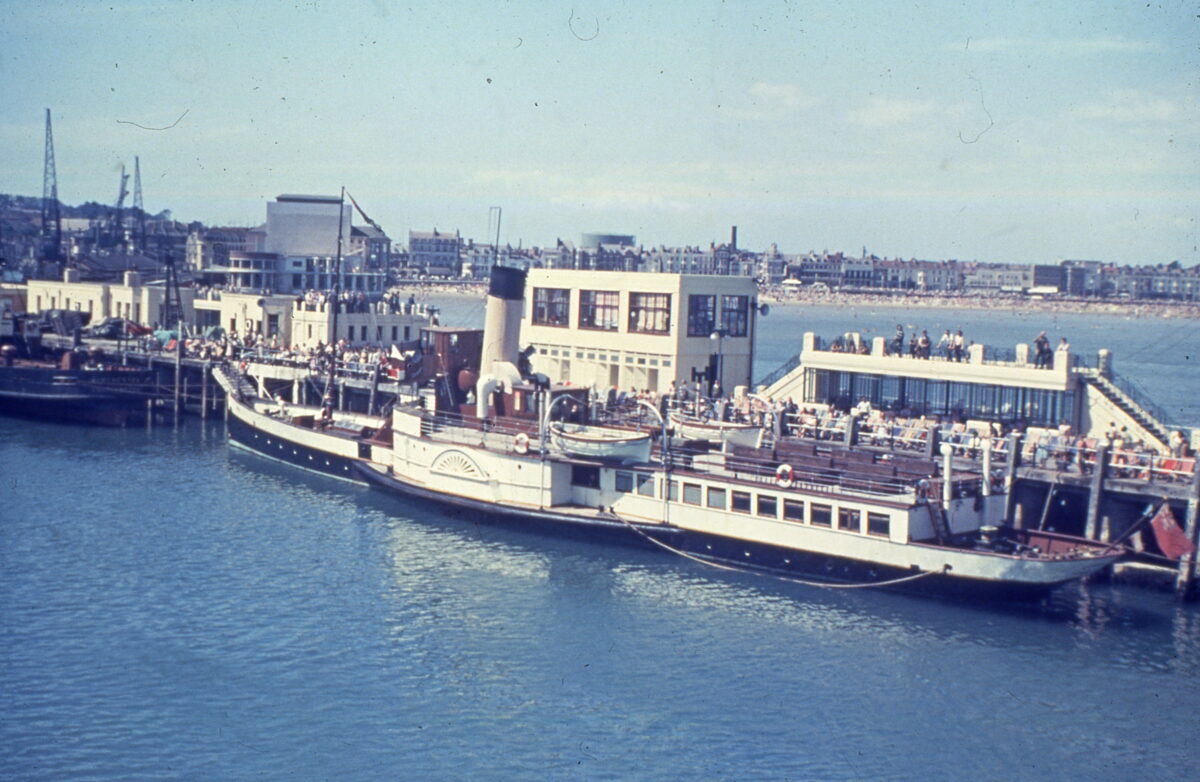
Consul started her 1960 season on Saturday June 4th by running a shuttle service to Portland Navy Days from the Weymouth Pleasure Pier with departures on the hour every hour from 12 noon to 6pm.
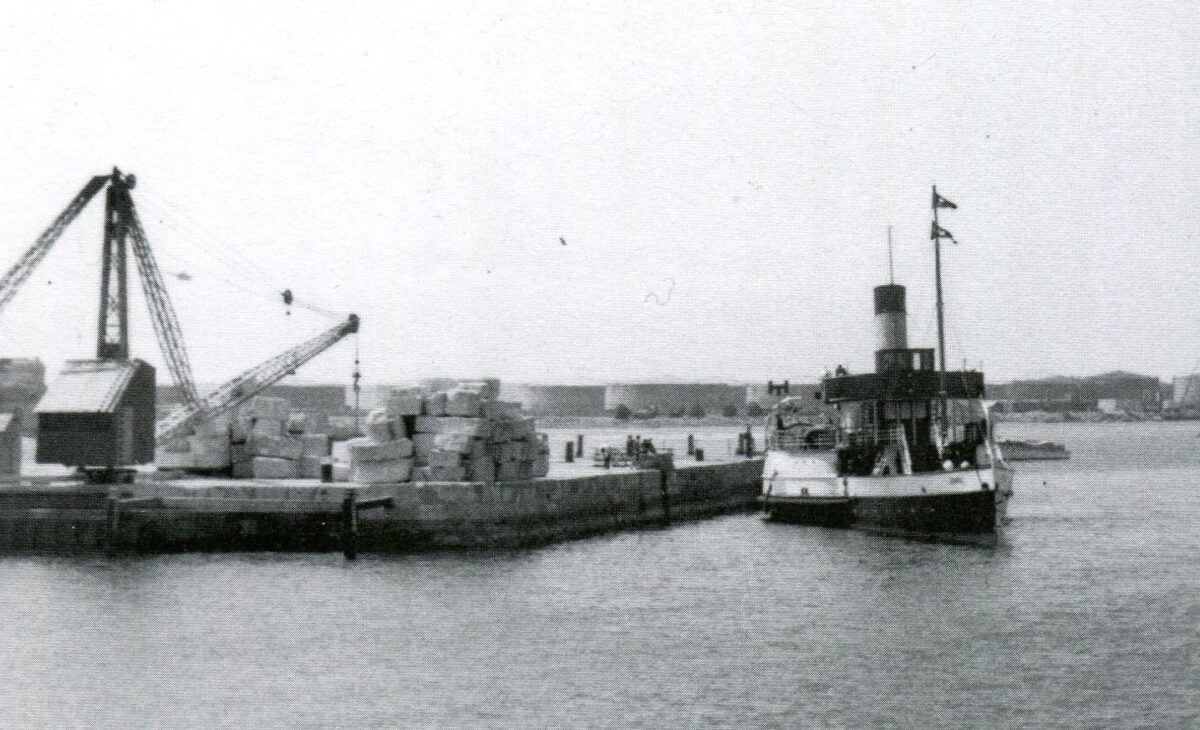
During the season she was rostered to run on 104 operating days, 84 of which were timetabled for local morning, afternoon and evening cruises to Lulworth Cove, The Bill of Portland, the Shambles Lightship and “Round HM Ships and Merchant Shipping in Portland Harbour and Tour of the Roadstead” with departures at 10.30 or 10.45 in the morning, at 2pm and 3pm in the afternoon and in the evening at 7.30 or 8.15 or 8.30.
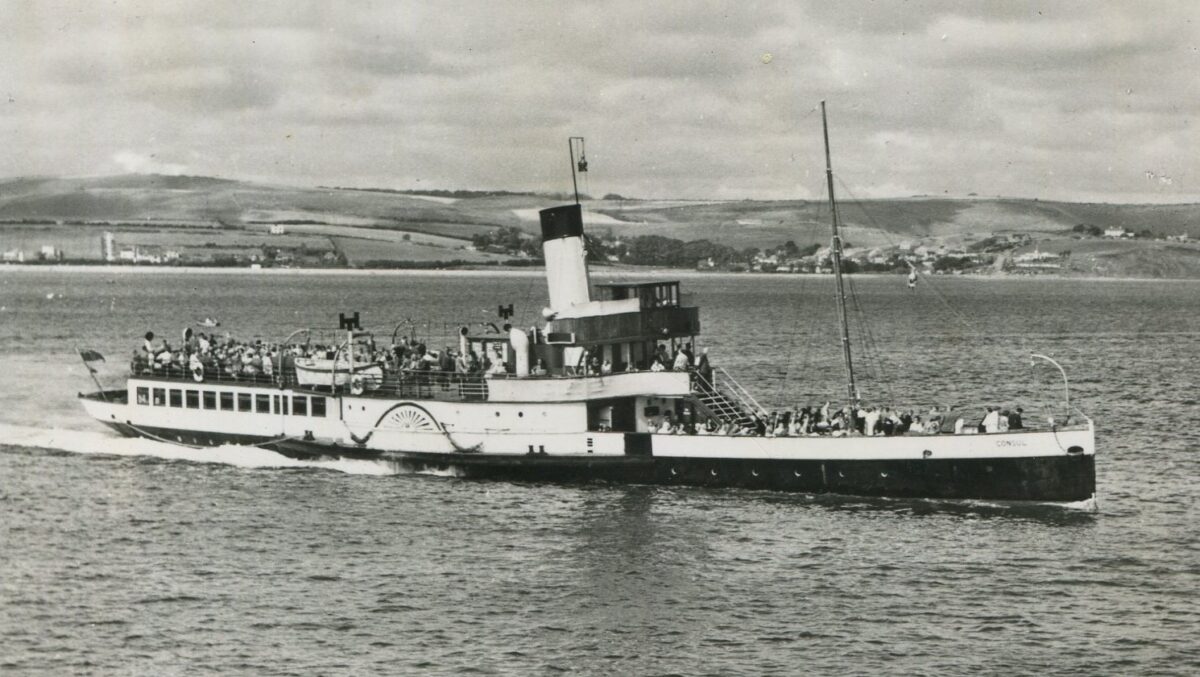
On just 14 days she was scheduled to leave Weymouth at 10am for day trips along the beautiful Dorset Coast to Swanage and Bournemouth. Consul was not a fast ship. Bernard Cox’s Buff Funnel Book puts her down as having a speed of 13 knots but I remember her master Captain Defrates telling me that generally speaking they ran her at about 11 knots through the water. The distance between Weymouth and Swanage is 22 nautical miles so in still water that would have taken her 2 hours. However seawater is rarely still with the tide running one way or another pushing her on or holding her back or setting her sideways. Sitting on the deck of a paddle steamer looking at the water it can be hard to visualise just how fast that water, which seems so still, is actually moving as it looks immobile unless it is passing something fixed liked a moored navigation buoy when the buoy itself appears to be on the move showing a bow wave. Why is that buoy moving through the water Daddy? It’s not moving Son. It’s the water moving past it.
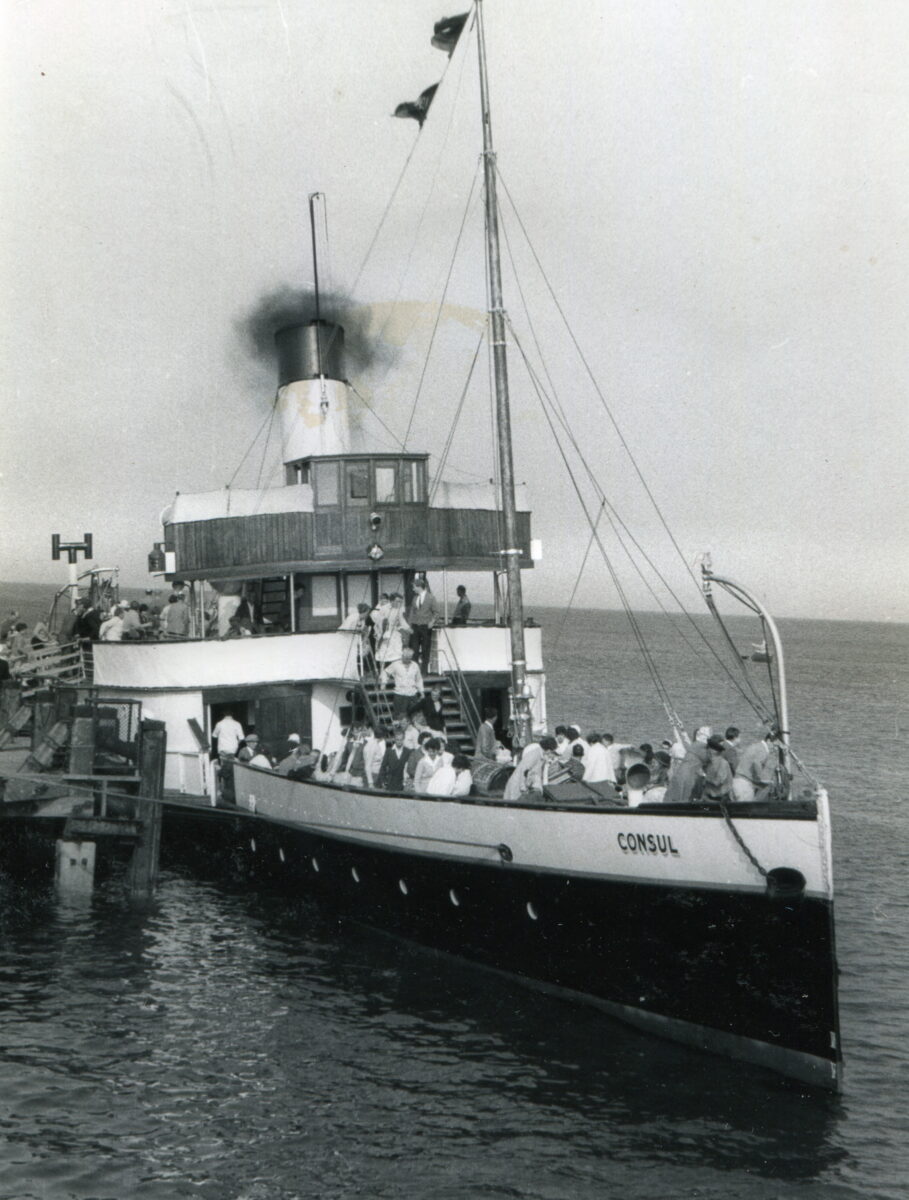
Leaving Weymouth at 10am with a 3 knot tide against her would have knocked Consul’s speed over the ground back to 8 knots and she would have taken two and three quarter hours to reach Swanage with an arrival time of 12.45pm. On days when the tide was with her that would have pushed her speed over the ground up to 14 knots so the journey time could have been as little as an hour and a half giving an arrival time in Swanage at 11.30am. This made it tricky slotting her onwards departure from Swanage to Bournemouth into the usual Swanage service timetable on these days. If she was early then her Bournemouth bound passengers from Weymouth would have had to wait aboard twiddling their thumbs and this would have annoyed them. Nobody likes sitting alongside a pier waiting when you want to get on to your destination. So in the main body of the season her departures on this trip from Swanage to Bournemouth weren’t advertised.
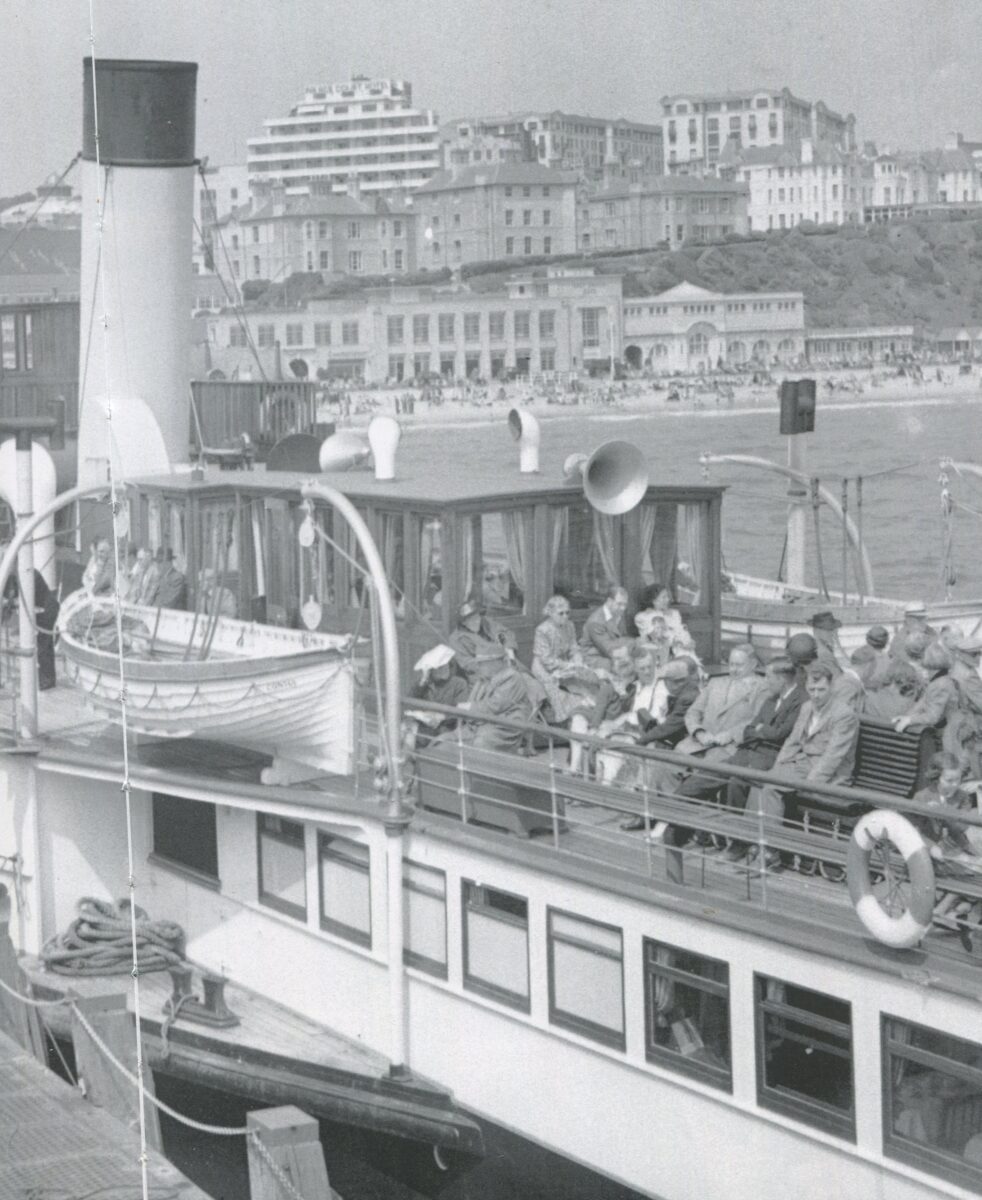
In June Consul was scheduled to run to Swanage and Bournemouth on Wednesdays 8th, 15th, 22nd and 29th. At this time of the season there was only Monarch running from Bournemouth with Embassy not set to make her first appearance on the scene until Saturday 2nd July. So whilst Monarch offered two round trips to Totland Bay one at 10am and then again at 2.,30pm, on these four days Consul was put to work adding a couple of round trips between Swanage and Bournemouth to the roster to provide at least some sort of Swanage service. And notwithstanding that in the main bulk of the season her departure from Swanage on her way to Bournemouth wasn’t advertised it was advertised on these four dates to leave Swanage at 1pm with Captain Iliffe told not to get to Swanage too early, however favourable the tide.
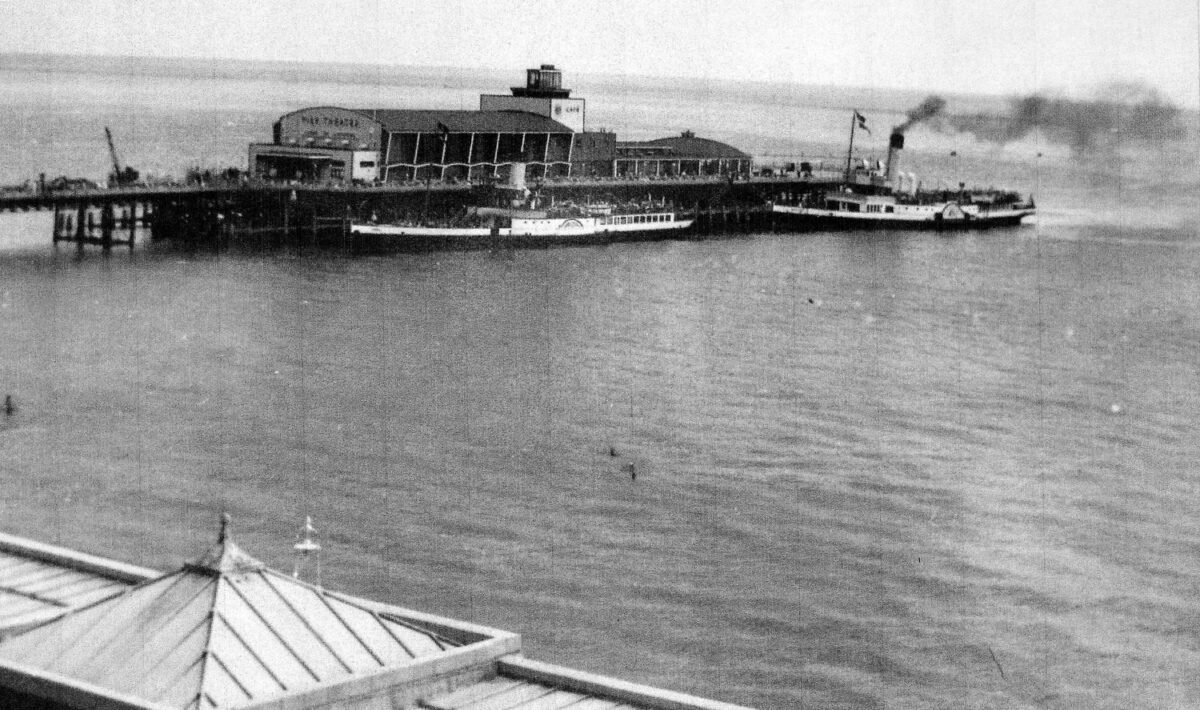
At 2.30pm Monarch left Bournemouth for the Isle of Wight and Consul departed for Swanage where she was due to arrive at 3.15pm before returning to Bournemouth for 4pm. Then fifteen minutes later she was timetabled to be off for Swanage once again and then onwards from there at 5pm back home to Weymouth.
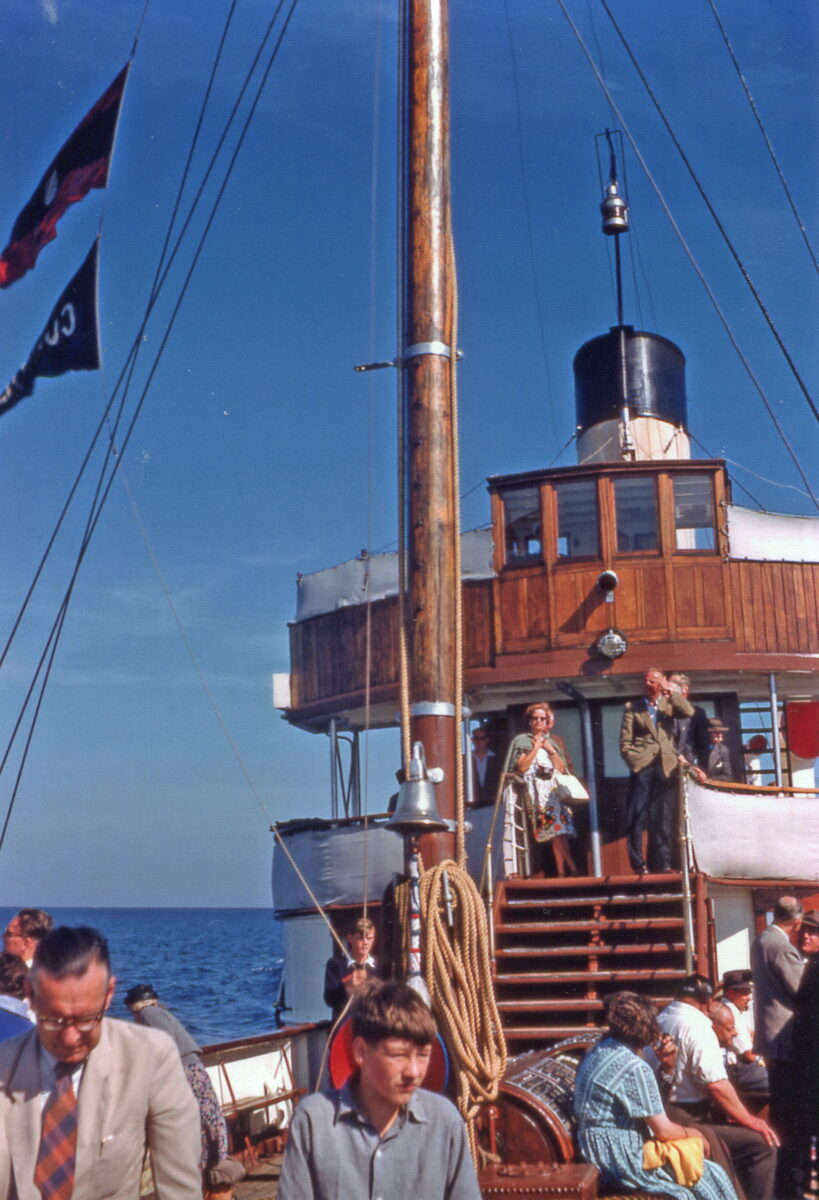
It is intriguing scouring these old steamer notices and seeing the details they throw up. For example the Bournemouth timetable gives Consul’s departure time from Bournemouth for Swanage and Weymouth as 4.15pm. The Weymouth steamer notice gives her return time from Bournemouth as 4pm. Some discrepancy here. Was that just careless rostering? Did the Bournemouth and Weymouth managements fail to liaise? Or was it a cunning plan to try make sure that Consul gathered up all (or almost all) the passengers she had brought to Bournemouth in the morning to take them back home?
In my experience there are always some wayward souls who ever push the return time on such trips in the expectation that the boat will wait for them and are then cross when they find that it hasn’t. This was ever an issue on our trips with KC from Chatham to Southend. The departure time came and went and we found that we were often light on numbers compared with what we had brought over. It was ever an issue with the GSN’s Thames sailings and so much so that one of the masters even resorted to broadcasting the BBC pips on the hour over his tannoy at sailing time. When they pipped he went whether or not all those he had brought down in the morning were gathered up back aboard. So by giving Consul’s return time from Bournemouth as advertised in the Weymouth steamer notice as 4pm that would have optimised the pick up of late stragglers who hopefully would have made it by the 4.15pm advertised in the Bournemouth steamer notice and so not become stranded and thereby avoid an angry presence at the Weymouth booking office the following morning.
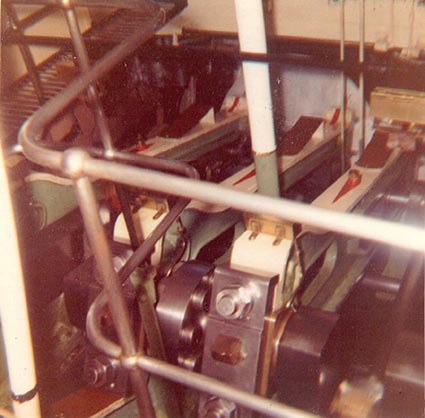
In July Consul was scheduled to run from Weymouth to Swanage and Bournemouth on Thursdays 7th, 14th, 21st and 28th. By then Embassy had taken over the sailings from Bournemouth to the Isle of Wight and Monarch was running the Swanage service. So to fill in her time at Bournemouth Consul was rostered at 2.30pm for a “Cruise Towards the Needles Lighthouse” back at 4pm in readiness for her 4.15pm departure back to Swanage and Weymouth.
In August the same pattern was timetabled for Thursdays 4th, 11th, 18th, and 25th with one additional sailing to Swanage and Bournemouth on Tuesday 2nd and this continued on into September with two such trips offered on 1st and 8th which was Consul’s last day trip of the season.
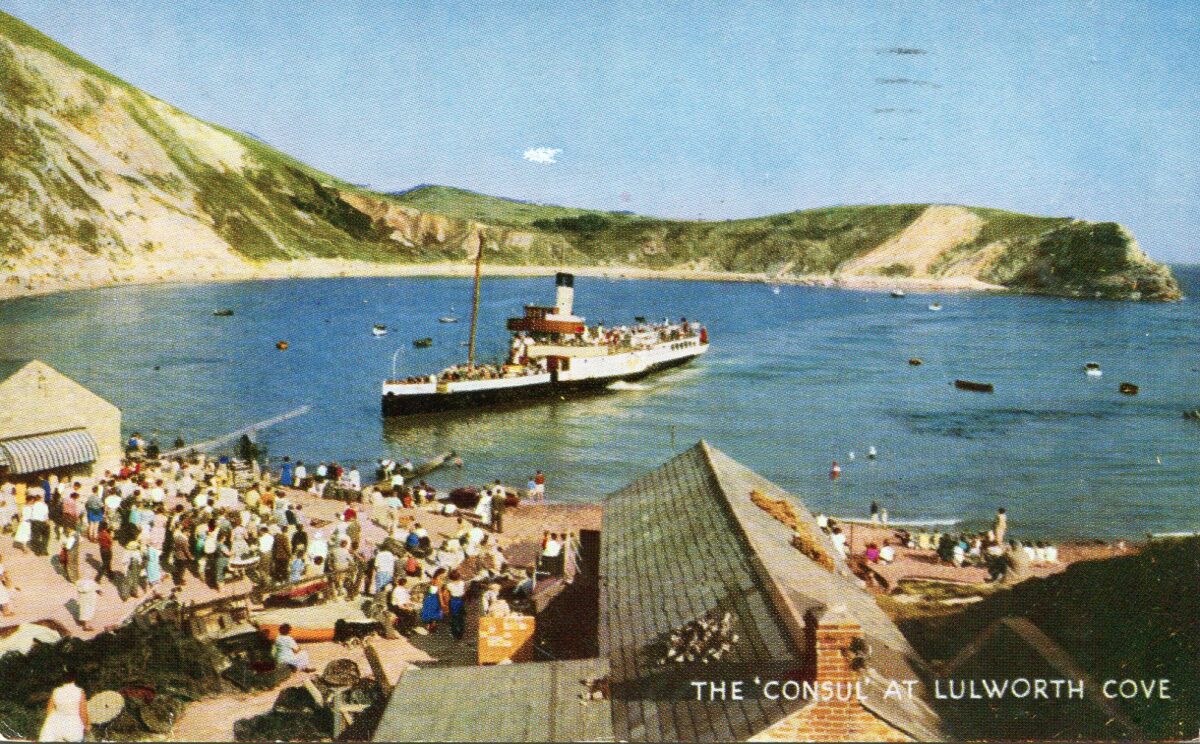
On Tuesdays 16th and 25th Consul had a different roster and one which enabled Bournemouth passengers to visit Lulworth Cove. For these she was scheduled to set off from Weymouth at 10am but only for Swanage where at 11.30am she picked up passengers brought from Bournemouth (10.45am) by Monarch to take them on to land for a couple of hours ashore at Lulworth Cove. On these two dates the tides were very favourable carrying Consul along with them and thereby enabling her to reach Swanage from Weymouth by 11.30am. This would not have been achievable with the tide against her as we have seen. Remember that 1pm worst case scenario arrival and departure from Swanage to Bournemouth in June after pushing the tide between Weymouth and Swanage? A 10am departure from Weymouth was therefore capable of getting to Swanage by 11.30am on some days but not until 1pm on others depending on the tides.
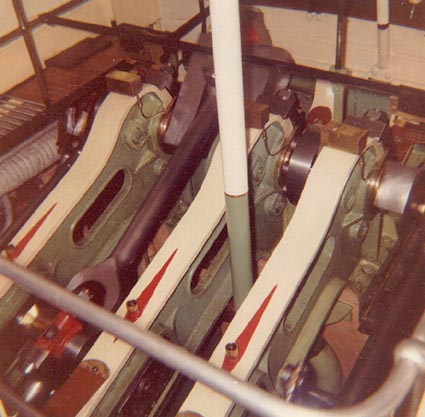
The only other day trips Consul ran in 1960 were on four Fridays July 15th and 29th and August 12th and 26th leaving Weymouth at 9.45am or 10am for Swanage and Totland Bay, Isle of Wight. These were marathons for a not very fast paddle steamer. They were only rostered in these peak weeks and then were only achievable once a fortnight when the tides were favourable or fairly favourable both ways.
Cosens knew that the day trips had the potential to be late back for all these reasons particularly on the days with adverse tides and most particularly when these coincided with a bit of wind which always slows a paddle steamer down. A larger significant wave height passing along the hull makes it harder for the paddle wheels to bite thereby impeding the speed. Yes leaving Swanage at 5pm with a favourable tide and in good conditions Consul could be back in Weymouth by 6.30pm. But with the tide against her and in poor weather conditions knocking her speed over the ground back to just 7 knots it might take three hours to cover the 22 nautical miles between Swanage and Weymouth. The return time to Weymouth was always given in the steamer notices as 8pm. If she got back earlier then all well and good. But with this return time reflecting the worst case scenario then that meant that Consul was pretty much never late back according to the timetable even though the journey time from Swanage to Weymouth might have taken twice as long when the wind and tide were against her than in more favourable circumstances.
After each of these Swanage and Bournemouth day trips there was usually an evening cruise round Portland Harbour advertised for the Weymouth punters but always at the later time of 8.15pm or 8.30pm and never as early as the more usual 7.30pm on other days when Consul had been running local trips. Cosens were masters at the subtle art of paddle steamer scheduling taking all circumstances into account.
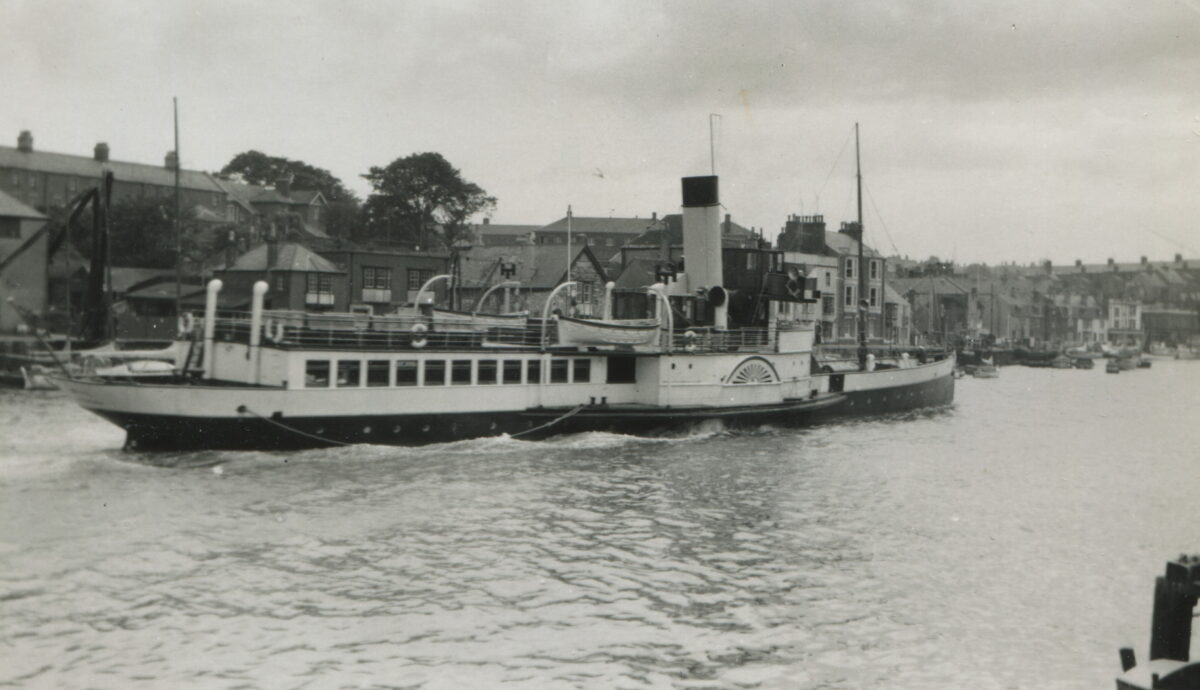
Experienced captains and engineers working together as a team are an essential part of any successful paddle steamer operation. Cosens of course knew this well and after a century of running paddle steamers had it generally sorted with an inbuilt ability to promote those who had already gained experience on their ships to more senior roles. However in their twilight years sometimes it was harder. For example at the end of the 1959 season the highly experienced Captain Rawle, who had spent most of his career with Cosens, retired so they were a captain short. And neither of the two highly experienced mates, Embassy’s Eric Plater and Monarch’s Arthur Drage, had master’s tickets although both knew how to handle a paddle steamer. Eric had been master of P & A Campbell’s Glen Gower during the war and had served under Captain Rawle since the war. And Captain Defrates was quite happy to let Arthur Drage handle Monarch in and out of the piers sometimes when he was her master. But they could not be promoted without the necessary ticket so the job as master of Consul in 1960 went to the most junior and inexperienced mate in the fleet Capt John Iliffe who did have a master’s ticket.
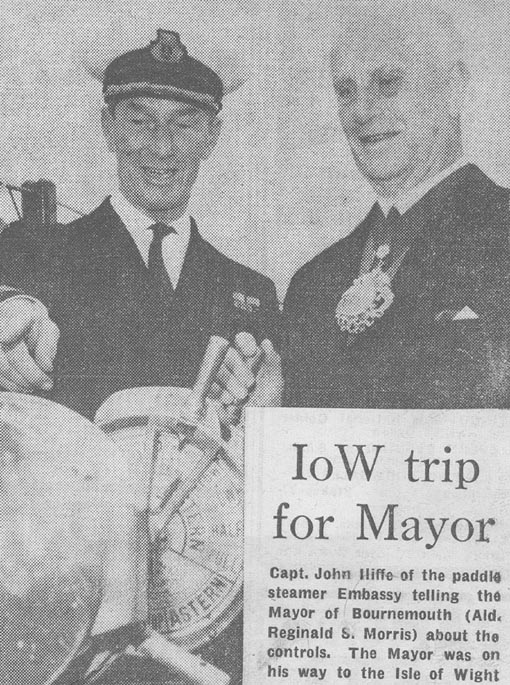
He had joined Consul as mate in 1959 after a career in the Royal Navy not much of which had involved any ship handling. However with 84 days that season running local trips in and out of the Weymouth Pleasure Pier and Lulworth Cove he picked it all up quickly. However things could be trickier on the longer day trips that summer to Swanage, Bournemouth and Totland Bay which were few in number and therefore did not provide that much opportunity to build up experience.
On one of the Thursdays during the peak weeks of 1960 Dad and my nine year old self visited Bournemouth Pier to watch the paddle steamers come and go. I have a very clear recollection of that afternoon. It was sunny with the sort of fresh breeze from the east often associated with high pressure systems. I remember Dad pointing out that you could tell the way the tide was running on the pier by looking at the water passing the piles. On this afternoon it was running from east to west. So for berthing on the west side of the pier at around 4pm on that day both wind and tide were setting Consul off.
We spotted her returning from her trip “Towards the Needles Lighthouse” and then turn to head into the west side of the pier. We watched her approach slowly and it was quite clear that it was not going well and that she was being set off from the pier. From my subsequent many years of experience handling a paddle steamer I know that in such conditions you have to come in quite fast. You have to keep the bow very much up tide and then as you approach put the helm off the pier as you ring full astern which gives a sideways thrust onto the pier. If you don’t do that you are lost. The wind and tide will set you off. And so it turned out on this afternoon with Consul ending up head onto the pier. This was something which I had never seen before. She backed off and made a second approach this time much faster. She came in just fine but the engine was slow to go full astern and she smashed into the pier splintering one of the piles. Today it is likely that cordons would have been thrown up and the public excluded from the scene but it was a different age back then. I remember Dad going over to look at the damaged pile and scooping up a few small splinters of wood which he gave to me to put in my pocket to keep in my then growing paddle steamer collection. “When you are older” he said “you will be able to look back on this as a bit of Bournemouth Pier knocked off by Consul in August 1960.”
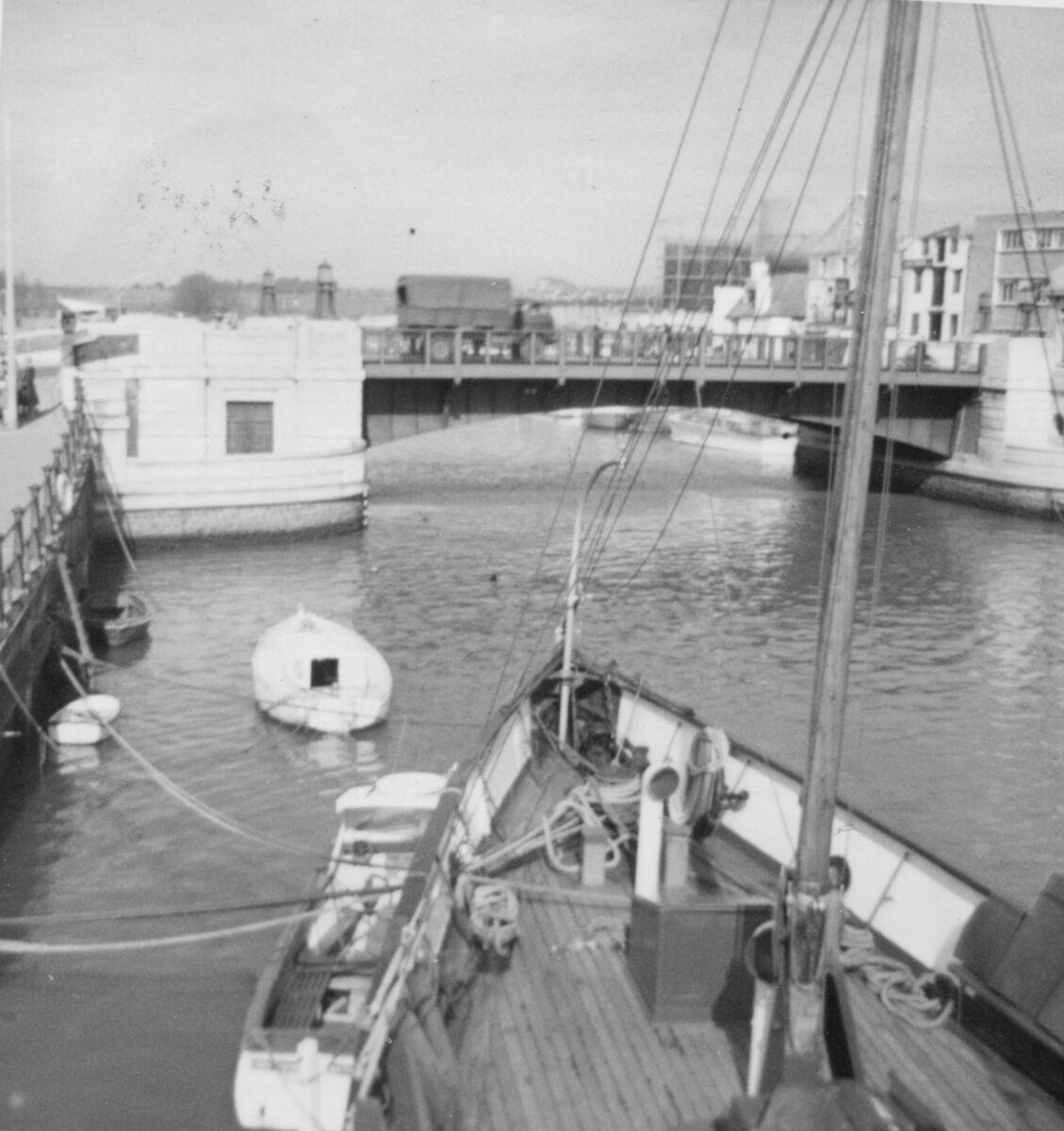
Consul’s last trips of the 1960 season were on 15th September with a 2pm departure round Portland Harbour and a “Tea Cruise Towards the Bill of Portland” at 3pm due back 4.45pm after which she spent that night as usual in her layby berth on the port hand next to Weymouth Town Bridge.
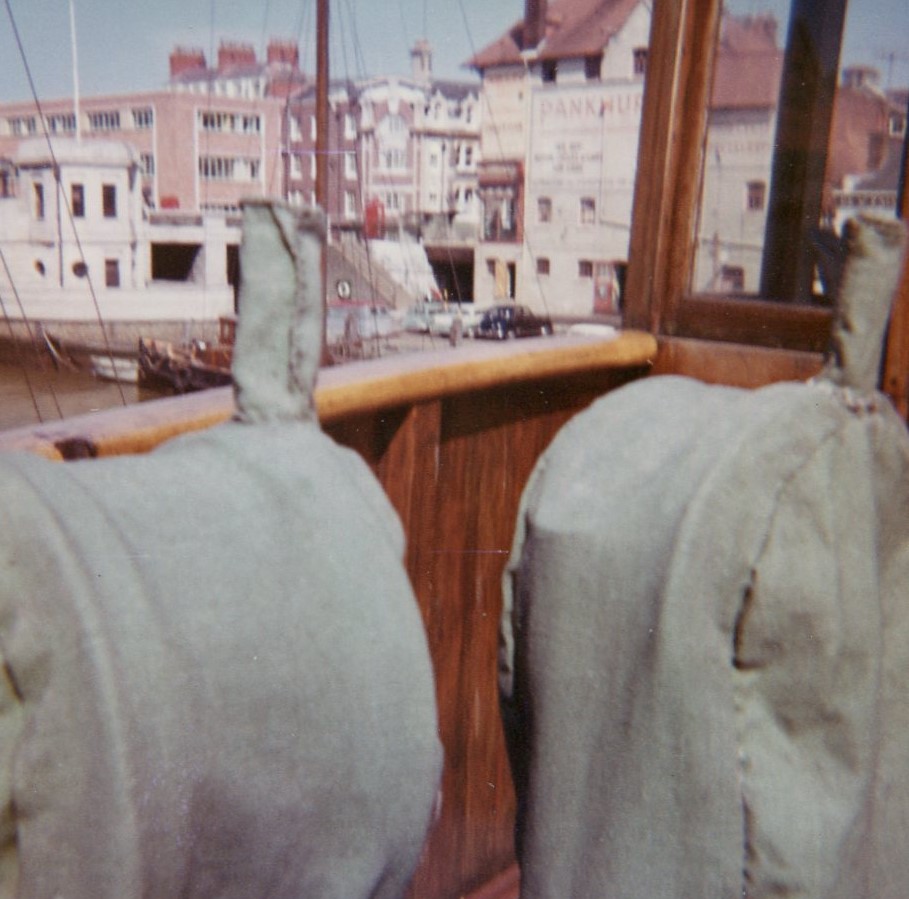
Around high water the following afternoon at 2pm Consul paddled the short distance through the bridge to lay up for the winter just upstream of the Town Bridge on the starboard side. As you can see in this picture this was a berth which tended to flood on high spring tides so the wooden posts were essential for stopping the paddle steamer sponsons riding over the quay wall and getting hooked up on a falling tide. Weymouth was very much a port fitted up with paddle steamers in mind.
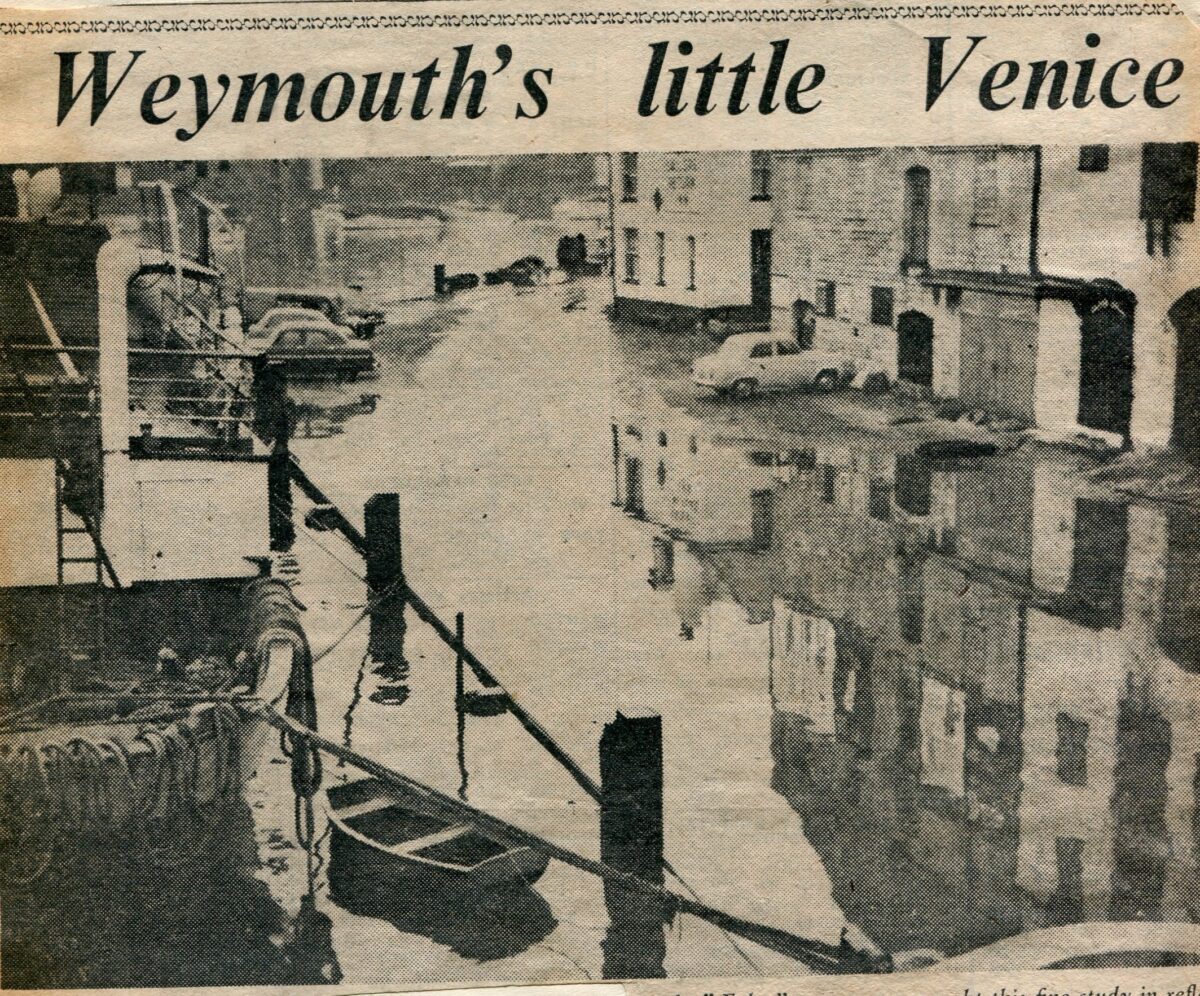
So that was Consul’s 1960 season. 104 scheduled operating days, 84 spent on local trips, 14 running to Swanage and Bournemouth, 4 to Swanage and Totland Bay and 2 to Swanage and back to Lulworth Cove for the benefit of the Bournemouth punters. It was Capt Iliffe’s first season in command of a paddle steamer. He would move to Embassy in 1963 and so became Cosens’s last master when she was withdrawn in September 1966. It was the first season I started to collect paddle steamer bits and bobs seriously. Every week that summer I went down to Cosens’s Head Office at 10, Custom House Quay, Weymouth to ask for the latest steamer notices for Weymouth, Bournemouth, Swanage and Totland Bay/Yarmouth Isle of Wight. Every week the nice lady behind the counter smiled sweetly and handed them over to me. The Weymouth ones were printed by local firm Sherrens which still exists today. Last year they ran off the fund raising flyer I produced for KC which I thought was a nice link between Consul and KC. The old and the new.
I took the steamer notices home with me and studied them in detail dreaming how wonderful it might be to spend a life closely working with paddle steamers. I still have them today and still get them out from time to time to remind myself how master paddle steamer operators Cosens & Co of Weymouth did it so expertly all those years ago.
Kingswear Castle returned to service in 2023 after the first part of a major rebuild which is designed to set her up for the next 25 years running on the River Dart. The Paddle Steamer Kingswear Castle Trust is now fund raising for the second phase of the rebuild. You can read more about the rebuilds and how you can help if you can here.
John Megoran

